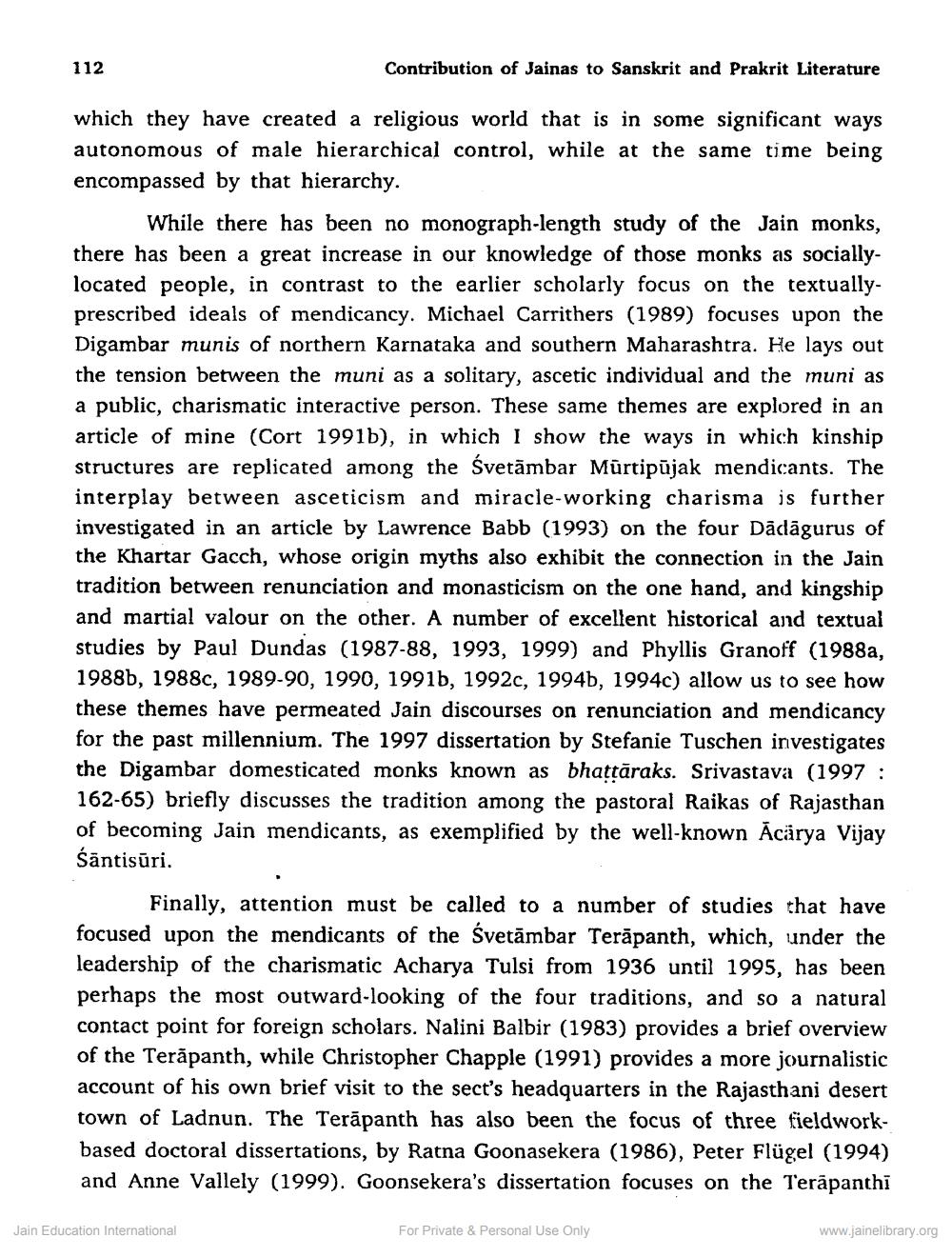________________
112
Contribution of Jainas to Sanskrit and Prakrit Literature
which they have created a religious world that is in some significant ways autonomous of male hierarchical control, while at the same time being encompassed by that hierarchy.
While there has been no monograph-length study of the Jain monks, there has been a great increase in our knowledge of those monks as sociallylocated people, in contrast to the earlier scholarly focus on the textuallyprescribed ideals of mendicancy. Michael Carrithers (1989) focuses upon the Digambar munis of northern Karnataka and southern Maharashtra. He lays out the tension between the muni as a solitary, ascetic individual and the muni as a public, charismatic interactive person. These same themes are explored in an article of mine (Cort 1991b), in which I show the ways in which kinship structures are replicated among the Śvetāmbar Mūrtipūjak mendicants. The interplay between asceticism and miracle-working charisma is further investigated in an article by Lawrence Babb (1993) on the four Dādāgurus of the Khartar Gacch, whose origin myths also exhibit the connection in the Jain tradition between renunciation and monasticism on the one hand, and kingship and martial valour on the other. A number of excellent historical and textual studies by Paul Dundas (1987-88, 1993, 1999) and Phyllis Granoff (1988a. 1988b, 1988c, 1989-90, 1990, 1991b, 1992c, 1994, 1994c) allow us to see how these themes have permeated Jain discourses on renunciation and mendicancy for the past millennium. The 1997 dissertation by Stefanie Tuschen investigates the Digambar domesticated monks known as bhattāraks. Srivastava (1997 : 162-65) briefly discusses the tradition among the pastoral Raikas of Rajasthan of becoming Jain mendicants, as exemplified by the well-known Acärya Vijay śāntisūri.
Finally, attention must be called to a number of studies that have focused upon the mendicants of the Svetämbar Terāpanth, which, under the leadership of the charismatic Acharya Tulsi from 1936 until 1995, has been perhaps the most outward-looking of the four traditions, and so a natural contact point for foreign scholars. Nalini Balbir (1983) provides a brief overview of the Terapanth, while Christopher Chapple (1991) provides a more journalistic account of his own brief visit to the sect's headquarters in the Rajasthani desert town of Ladnun. The Terāpanth has also been the focus of three fieldworkbased doctoral dissertations, by Ratna Goonasekera (1986), Peter Flügel (1994) and Anne Vallely (1999). Goonsekera's dissertation focuses on the Terapanthi
Jain Education International
For Private & Personal Use Only
www.jainelibrary.org




